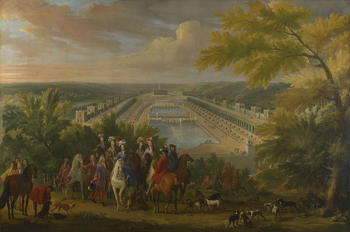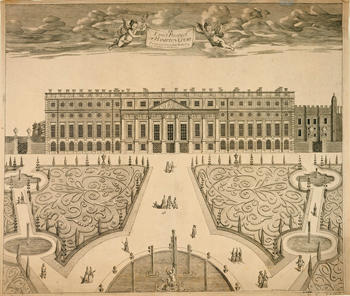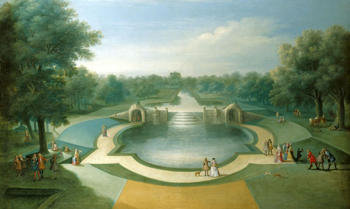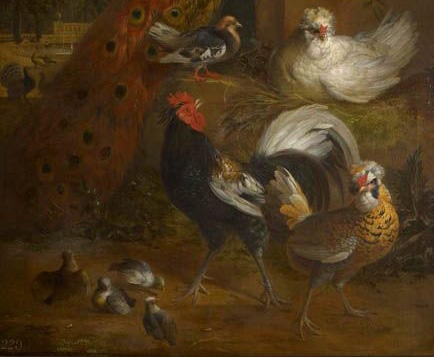
The Baroque Garden and the Artist
The formal seventeenth-century garden was full of exciting new features which engaged artists.

A Hawking Party at Marly, by Jean-Baptiste Martin ©
Axial plans and long views
Long views aligned on a building were promoted by the French garden designer André Mollet (d. c.1665) in his treatise Le Jardin de Plaisir (1651). These new extremes of depth in the garden could be re-created for dramatic effect on the two-dimensional picture plane through the mastery of the rules of single-point perspective.

An exact prospect of Hampton Court by Sutton Nicholls ©
Parterres
Parterres – ornamental flower gardens – provided a pleasing symmetry and decorative appeal. This could be exploited from ground level or in the aerial view, which became the standard form of presentation of the garden, both in print and on canvas.

A View of the Cascade, Bushy Park Water Gardens, c.1715, Studio of Marco Ricci ©
Water Features
‘Water and fountains are the most important ornament in gardens’ wrote the garden theorist Antoine-Joseph Dezallier d’Argenville in 1709. Great cascades, or water-staircases, were particularly favoured in Italy and France; in England single jet fountains were preferred. Long canals also appeared for the first time and feature in Baroque garden art.

Birds in a Landscape ©
Aviaries
Aviaries had been a feature of gardens since ancient times. They became increasingly popular in the seventeenth century, particularly in the Dutch Republic and in England after the accession of William III and Mary II. Artists exploited the new fashion by producing large-scale paintings of wildfowl in formal garden settings.

A marble vase in the Medici Gardens, Rome, 1656 by Steffano della Bella ©
Urns
Monumental carved urns and vases formed part of the artist’s repertory from the mid-seventeenth century. Urns and vases enriched the formal garden by their evocation of the classical past and also provided useful ‘punctuation’ to emphasise the regularity and geometry of garden layouts.